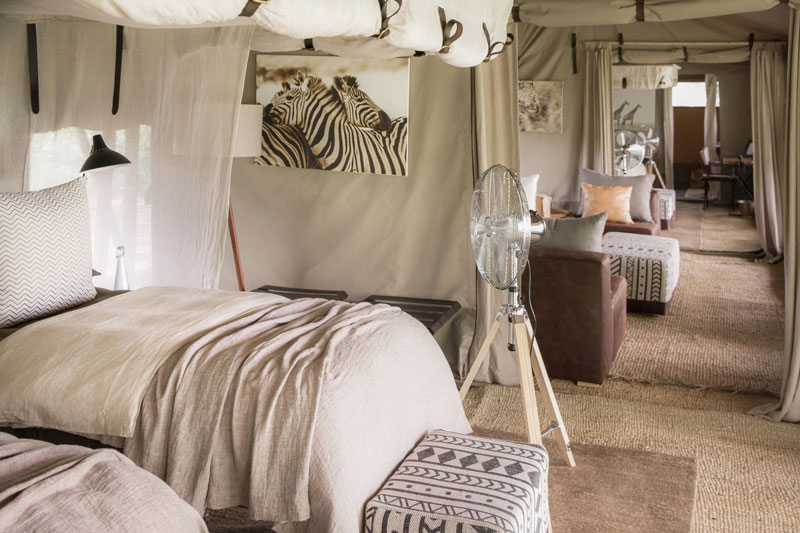Mila Tented Camp
Mila Tented Camp is permanent luxury tented camp located in the western corridor of the Serengeti National Park.
Mila Tented Camp is one of Legendary Expeditions permanent tented camps, and offers a similar experience to sister camps Songa and Nyasi. The tents themselves are very comfortable and luxuriously furnished, whilst maintaining the feel of an authentic tented experience. The central areas off a similarly simple but elegant set up, with sophisticated lounge and dining tents leading out to camp fire areas with views out over the surrounding plains. The food and service are superb, and their guides are very good too. A key factor to consider with all Legendary Expeditions camps is that they focus very hard on providing an exclusive safari environment for each group of guests. A private guide and vehicle are included as standard, but Mila also provide private dining and private sunset drinks for all drinks. Mila is not the right camp if you are seeking communal dining and a vibrant bar in the evening, but it is perfect for any couple, family or group seeking a very sophisticated and private tented camp experience.

ACCOMMODATION
The camp caters for around 14 guests in six very comfortably furnished tents, each set on a low wooden platform with en suite plumbed facilities including toilet, double vanity and indoor shower. One of the tents…

AREA & ACTIVITIES
With an area of some 14,000 sq. km, Serengeti is probably the best-known wildlife sanctuary in the world. The ecosystem includes the National Park itself, the Ngorongoro Conservation Area, Maswa Game Reserve and Kenya’s Masai Mara…

Families
Children are welcome from the age of four years. Nyasi Tented Camp offers a good family tent option and the flexibility of a private guide and vehicle, however with activities limited to game drives…

Conservation & community
Legendary Expeditions is a Friedkin Tanzania Company and has a deep commitment to positive impact through eco-tourism. The Friedkin Conservation Fund was established to conserve two million acres of…
| Location | Serengeti National Park |
| Access | Scheduled or charter flight to Grumeti Airstrip |
| Open | 16 May – 31 March |
| Pricing | £££££ |
| Camp Style | Luxury tented camp |
| Focus | Big game / Private activities |
| Children | 4 Years + |
| Activities | Game drives (day) / Hot air ballooning |
| Vehicles | Open |
| Maximum Guests on Vehicle | Private only |
| Private Vehicle Options | Yes (included as standard) |
| Off-road Driving | No |
| Number of Rooms | 6 (including a two bedroom family tent) |
| Family Accommodation | 1 two bedroomed family tent |
| Bathroom | Flush toilet / Plumbed basin / Plumbed shower |
| Power for charging | In room |
| Lighting | Solar |
| Hairdryer | Not possible |
| Heating/Cooling | Standing fans |
| Room Safe | No (manager’s safe) |
| Laundry Service | Complimentary |
| Communication in room | Radio |
| Wi-Fi | Throughout |
| Mobile Reception | No |
| Swimming | No |
| Wellness | No |
| Dining Style | Private |
| Drinks Included | House drinks |
| Credit Cards | Not accepted |


















